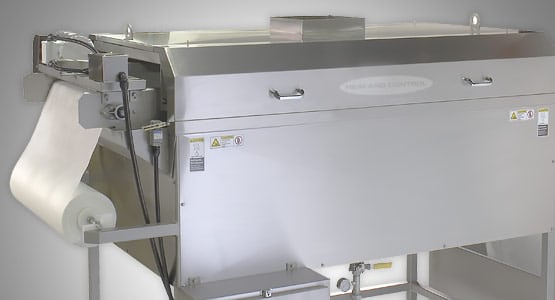Non-woven fabrics are vital to construction. Consider this market analysis.
According to EIN Presswire:
“Findings from Facts and Factors report “Construction Non-Woven Fabrics Market By Type (Meltblown, Spunbonded, Spunlace, Needle Punch, and Others) and By Application (Reinforced Material, Roofing Waterproof Material, and Others): Global Industry Outlook, Market Size, Business Intelligence, Consumer Preferences, Statistical Surveys, Comprehensive Analysis, Historical Developments, Current Trends, and Forecasts, 2020–2026” states that the global construction non-woven fabrics market in 2019 was approximately USD 7,188 Million. The market is expected to grow at a CAGR of 7.5% and is anticipated to reach around USD 11,960 Million by 2026.
“Nonwoven fabric can be defined as the fabric like material prepared from long fibers and staple fibers which are bonded together by mechanical, chemical, heat or solvent treatment. The term ‘Nonwoven fabric’ is used in the textile manufacturing industry for fabrics that are neither knitted nor woven. Nonwoven fabric is an integral part of the construction industry may it be in the residential, commercial or industrial sectors. Construction non-woven fabric is used for greenhouse shading, insulation, modified bitumen roofing, pavement overlays, roadway reinforcements, and roofing components. Non-woven fabric is the third most manufactured textile surface material after knitted and woven fabrics.
“COVID-19 Impact Analysis, A research report overview, TOC, list of tables and figures, an overview of major market players, and key regions included.
“Non-woven fabric has a number of advantages such as it can be designed with specifically targeted properties, can be produced with substantial variations in thickness, mass, voluminosity, elasticity, and stiffness, and is comparatively quick and cheap to manufacture. The nonwoven fabric has wide applications in building construction, such as the roofing membrane and another residential and industrial sector. The sturdy recovery of the construction industry in the developed regions and the rapidly growing construction industry in developing regions are anticipated to drive the market growth. For instance, the globally-growing market of luxury vinyl tiles (LVT), where nonwovens can play an important role in the future of this market. Moreover, glass fiber nonwovens are being increasingly used for flame-retardant applications as glass fiber nonwovens fabric offers excellent performance compared to traditional materials. Lack of awareness among consumers regarding the importance of construction non-woven fabric is likely to restrain market growth. Consistently increasing applications of nonwovens in the construction industry are projected to open new opportunities during the forecast period.
“The global construction non-woven fabrics market is segmented into type, applications, and region. The type segment is classified into Meltblown, Spunbonded, Spunlace, Needle Punch, and Others. Meltblown type segment holds around 30% share of the market. Further, the application segment is categorized into Reinforced Material, Roofing Waterproof Material, and Others. The reinforced material segment held maximum share and is estimated to maintain the trend during the analysis period. The regional segment includes major regions such as Europe, North America, Asia Pacific, Middle-East & Africa, and Latin America. Asia Pacific region is leading the regional segment owing to the presence of top growth recording countries such as China, India, and other Southeast-Asian countries. Major countries included in the scope of the report are the U.S., China, Japan, Canada, Germany, France, UK, India, South Korea, Brazil, and South Africa among others…
“The top players operating in the market space are Kimberly-Clark, Ahlstrom, Fitesa, Low & Bonar, Avgol, Glatfelter, Georgia-Pacific, Freudenberg, Johns Manville, DuPont, AVINTIV, and Lydall among others. Merger and acquisition are among the primary strategy adopted by the major players. For instance, Ahlstrom-Munksjö acquired Expera and Caieiras in October 2018. The acquisition of Expera significantly expands the company’s presence in North America and strengthens its offering of advanced customer-oriented fiber-based materials…”









